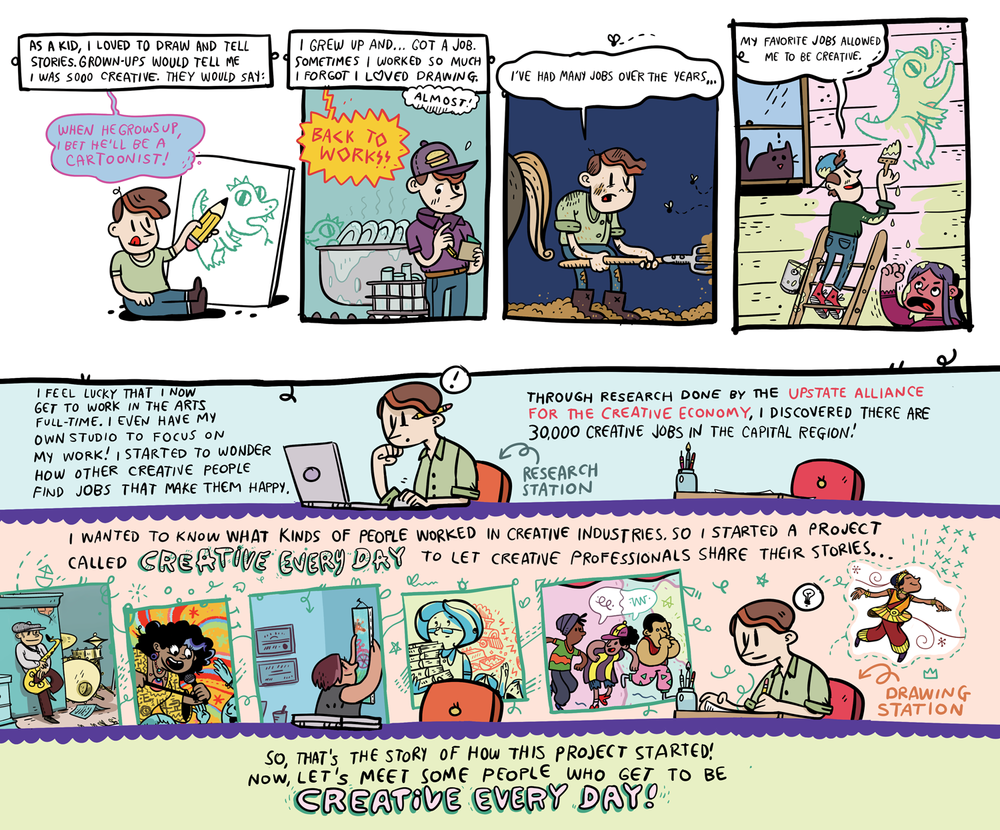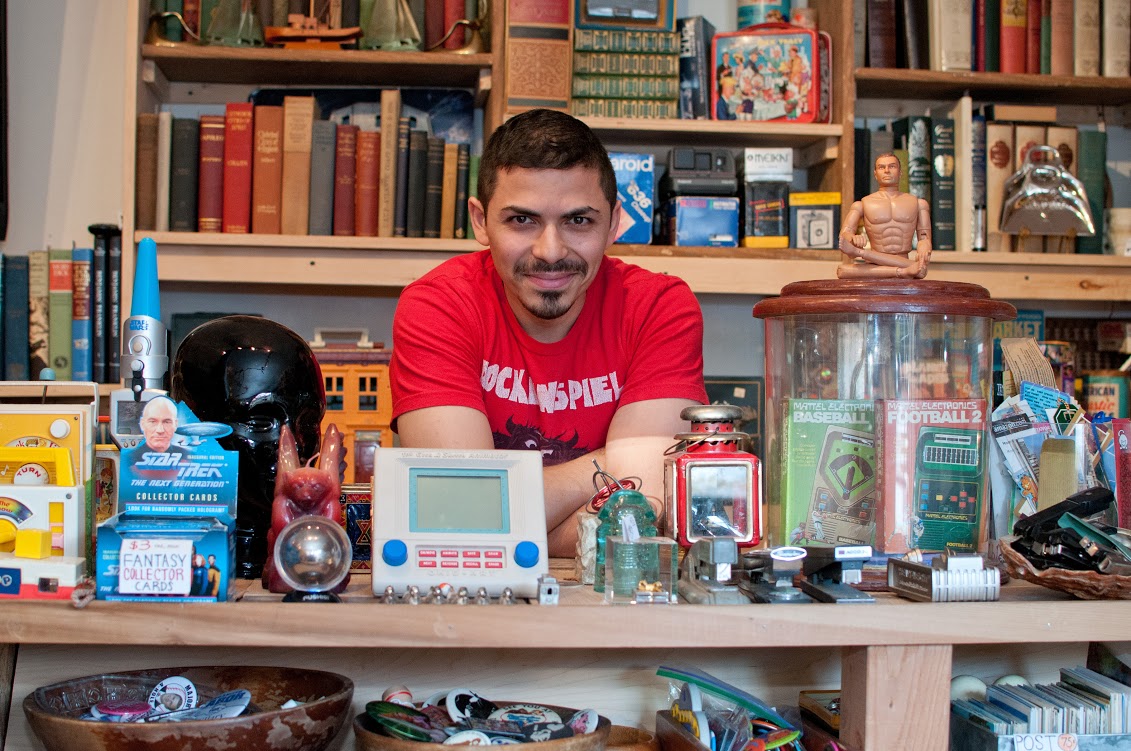“I’ve had many jobs over the years,” says a cartoon version of cartoonist Ira Marcks on the first page of his new book, Creative Every Day: Tales of Art and Life Colliding. Sponsored by the nonprofit Workforce Development Institute, the book chronicles 50 Capital District artisans working in the somewhat nebulous field known as the “creative economy.” In the opening sequence, cast in a self-described “flat” style—there is layering, but the figures are akin to paper dolls—Marcks washes dishes, shovels manure, and paints a house, all the while longing for a more inspired gig. That wish has since come true. Marcks, 35, now works as a “freelance contract teacher” for a number of schools, including Sage College, training illustrators in the art of visual narrative.
He is lucky, but not alone. According to a 2014 study by the Upstate Alliance for the Creative Economy, which inspired Marcks’ book, there are 30,000 “creative jobs” in the region. The study breaks the field into five segments—design, media, visual arts and crafts, performing arts, and heritage and preservation. It’s such a big tent that it is a bit unwieldy, which makes Marcks’ colorful guide–though aimed at children–a helpful resource for this reporter, who apparently belongs to this plaid-shirted legion.
Creative Every Day accounts for all five segments; each cast member gets a half page to soliloquize. Marcks often intercedes to keep things moving—it’s for children, remember, though adults will also appreciate the fast pace (today our attention spans are just as short). Here’s Stephanie Means—“a lady with unruly curly hair, paint on my pants and a studio of my very own”—reclining in a chair she’s just reupholstered. Here’s Nadine Medina, owner of Troy Dance Factory, bending in a way that would seem caricatural but, in her case, probably isn’t. (She’s an engineer and jeweler, too.) We meet The Alt’s own Jeff Nania, saxophone at hand, leaning against the wall of a practice space. He looks, in our unbiased opinion, extremely cool. “I found my way as a musician by joining in with others on their own musical journeys,” he says.
Marcks is also impressionable, counting Charles Schulz (Peanuts) and Bill Watterson (Calvin and Hobbes) as influences, but he takes a slightly different tack. The cartoonist received over 150 online submissions for Creative Every Day, and initially scripted stories for all of them. “In a perfect world, where I was getting paid way more, I would’ve made a giant book of all [their] lives,” he told The Alt at his studio in downtown Troy. A binder stuffed with submissions lay open on his worktable. “If you look, you can find something inspiring about anybody who’s just put time into anything,” he said.
“That’s my way of collaborating,” Marcks added. “It’s like, give me the content and I will boost you up.” Having culled so much content for the project, he found a thread perhaps more unifying than the word “creative”—a term which, he allows, is a bit worn out. Creative Every Day, Marcks says, is really about “people trying to figure out themselves,” then figuring out what they can do with whatever they are.





